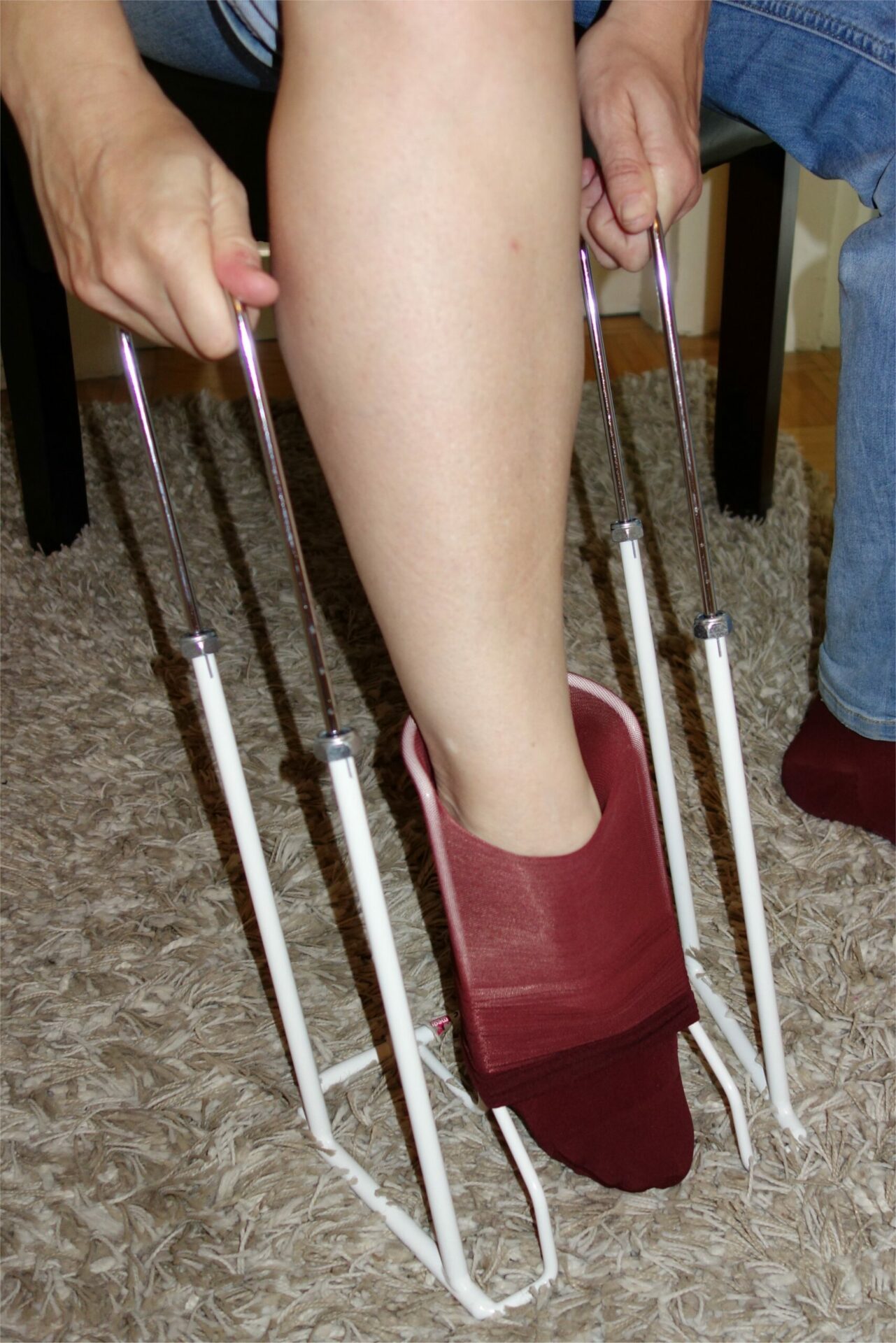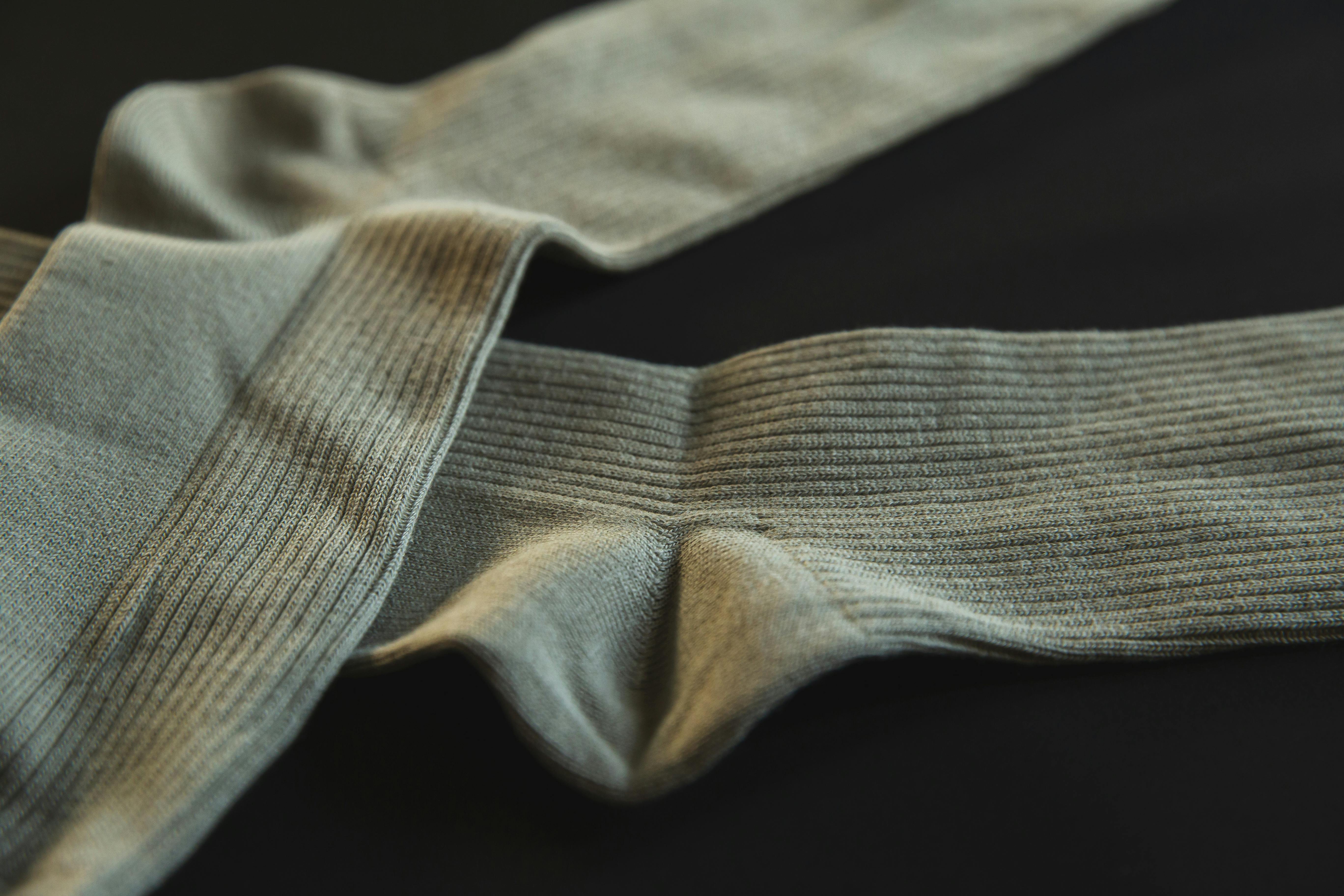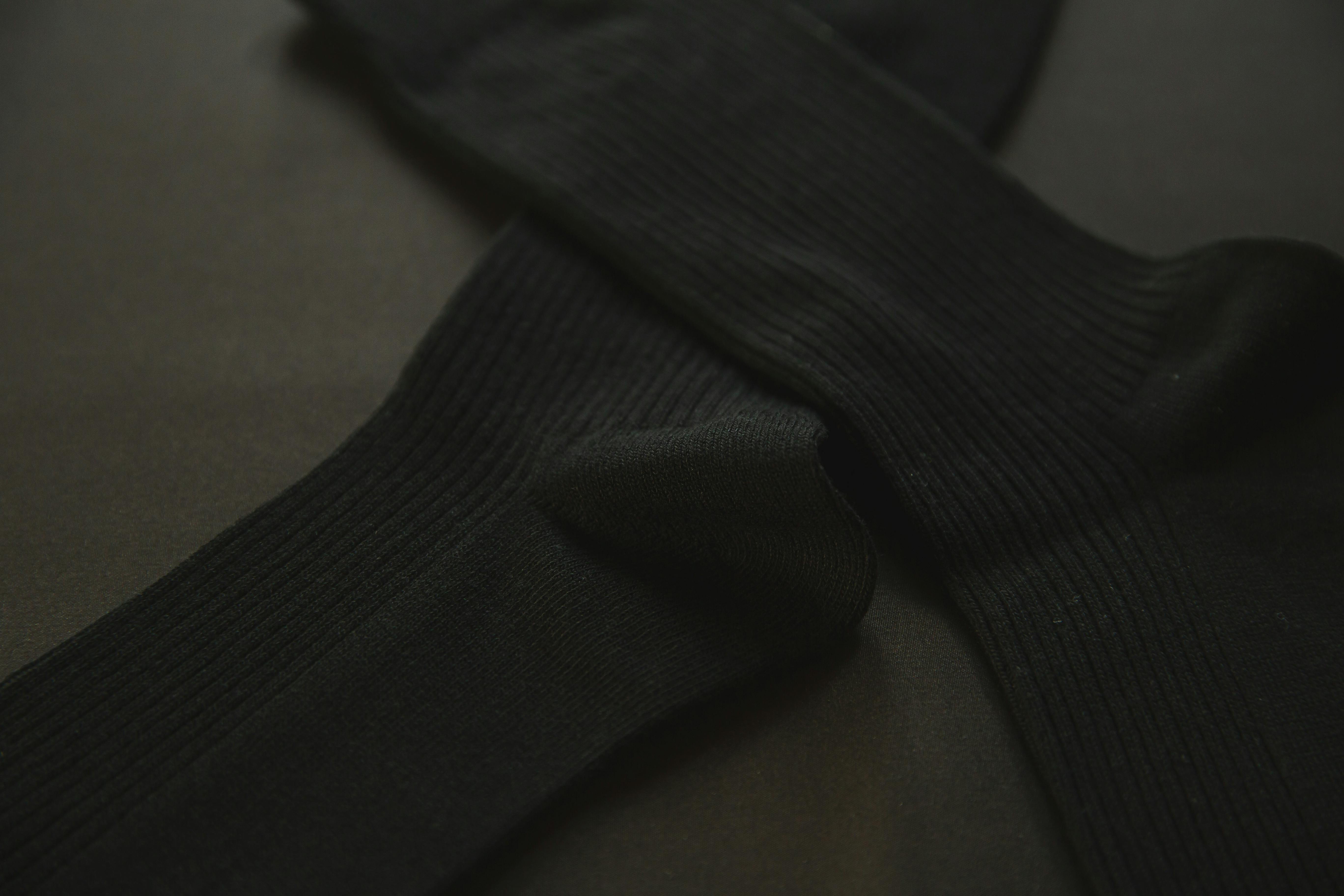How Long Are You Supposed To Wear Compression Socks

Compression socks are a type of medical clothing designed to provide support and relief from the pain caused by a variety of medical conditions. They are made from special fabrics that put pressure on your legs and ankles, which can help reduce swelling, improve circulation, and reduce fatigue. But how long should you be wearing compression socks? The answer depends on your individual needs, as well as the advice of your healthcare provider.The benefits of wearing compression socks include improved circulation, reduced fatigue, and reduced muscle soreness. Compression socks help to improve circulation by providing support to the veins in the lower legs, which can reduce swelling and prevent blood from pooling in the ankles and feet. This can also reduce discomfort caused by varicose veins. Wearing compression socks can also help to reduce fatigue by increasing oxygen delivery to the muscles during physical activity. Additionally, compression socks can help to reduce muscle soreness after exercise by aiding in the removal of lactic acid from the muscles.
How Do Compression Socks Work?
Compression socks are specially designed to apply pressure to the legs, ankles, and feet. This pressure helps improve circulation, reduce swelling, and improve overall comfort. Compression socks are made with a combination of materials, including elastic yarns that can help reduce swelling and improve blood flow. The amount of pressure applied by the sock is based on the specific design of the sock. Generally speaking, the more pressure applied, the greater the benefit. Compression socks come in a variety of sizes and styles to accommodate different leg shapes and sizes.
Compression socks work by applying gentle pressure on your legs and feet. This helps increase circulation in your lower extremities while reducing swelling in your ankles, feet, and calves. By improving circulation, compression socks can help reduce fatigue in your legs as well as muscle soreness after exercise or long periods of standing or sitting. Additionally, compression socks can help those who suffer from chronic venous insufficiency (CVI) or varicose veins by helping reduce symptoms such as pain and swelling caused by these conditions.
Compression socks come in varying levels of pressure depending on your needs as well as individual preference. There are three main levels of compression: mild (8-15mmHg), moderate (15-20 mmHg), and firm (20-30mmHg). Depending on your specific needs, you may require a different level of compression than someone else to achieve desired results. It is important to consult with a doctor before purchasing a pair of compression socks to ensure you get the correct level for your individual needs.
Compression socks can be worn for extended periods of time without any discomfort or risk of injury as long as they are properly fitted and not too tight for prolonged use. They should be put on before getting up in the morning and removed before going to bed at night for best results. As with any medical treatment, it is important to seek advice from a medical professional before making changes to your current routine.
Types of Compression Socks
Compression socks are designed to provide a variety of benefits, such as improved circulation, reduced swelling, and relief from pain caused by varicose veins or other medical conditions. They come in a range of styles and sizes, so it’s important to choose the right type for your needs. The most common types of compression socks include graduated compression socks, anti-embolism stockings, and diabetic/circulatory socks.
Graduated compression socks are designed to promote circulation and reduce swelling in the feet and lower legs. They typically feature a higher level of compression at the ankle that gradually decreases up the leg. This helps to encourage blood flow back towards the heart and can help relieve tired legs, swollen ankles, and varicose veins.
Anti-embolism stockings are medical-grade compression stockings used to reduce the risk of deep vein thrombosis (DVT). They provide more firm compression than graduated compression socks and are usually knee-high or thigh-high for maximum effectiveness. These types of socks are mostly used in hospitals or other medical settings and may be prescribed after surgery or when someone is confined to bed rest.
Diabetic/circulatory socks are designed with special features like non-binding tops that help improve circulation for those with diabetes, arthritis, edema, or other circulatory issues. These types of socks offer light to moderate compression levels as well as cushioning for extra comfort. They also help keep feet dry by wicking away moisture while providing cushioning for sore feet.
How to Choose the Right Compression Sock
Compression socks can be a great way to reduce pain and swelling in your legs, as well as preventing potential health issues. But choosing the right compression sock can be tricky. Here are a few tips to help you make the right choice:
First, consider your health needs. If you have a medical condition such as varicose veins or edema, compression socks may be recommended by your doctor. Make sure to discuss the right type of sock with your doctor or healthcare provider before making a purchase.
Next, think about what type of activity you’ll be doing while wearing the socks. Different types of socks provide different levels of compression, so if you’re an athlete or frequently on your feet for long periods of time, you may want to opt for a higher level of compression than someone who just wants to reduce swelling while sitting at their desk.
Finally, consider the material and fit of the sock. Compression socks are typically made from either nylon or spandex and come in several different sizes. Make sure that you choose a sock that fits properly and is comfortable for you to wear for long periods of time.
By following these tips, you can ensure that you choose the right compression sock for your needs and lifestyle. With the right pair of compression socks, you’ll be able to enjoy all the benefits they have to offer without any discomfort or ill-fitting garments!
How to Wear Compression Socks Properly
Compression socks are beneficial for athletes and people with medical conditions. They help to reduce inflammation, improve circulation, and prevent swelling. Wearing compression socks properly is important to ensure maximum benefit. Here are some tips on how to wear compression socks properly:
1. Put your sock on before you start any physical activity. This will ensure that the sock is secure and won’t slip down during your workout.
2. Make sure the sock is fitted properly and not too tight or too loose. If it’s too tight, it can cause discomfort and restrict blood flow. If it’s too loose, it won’t be able to provide the necessary support and compression.
3. Choose socks that are made of breathable material such as cotton or lycra blend for maximum comfort and breathability.
4. When taking off the socks, be gentle and remove them slowly so they don’t become stretched out or damaged in any way.
5. Make sure you wash your compression socks regularly with mild detergent as directed by the manufacturer’s instructions to keep them clean and free of bacteria or dirt buildup which can cause skin irritation or infection if left unchecked for too long of a period of time.

Is It Safe to Wear Compression Socks All Day?
Compression socks are a popular choice for people who want to improve their circulation and reduce leg fatigue. The tight elastic material helps increase the flow of blood throughout the legs and feet, aiding in better circulation. If you’re wondering if it’s safe to wear compression socks all day, the answer is yes.
However, it is important to take some precautions when wearing compression socks all day. Make sure that you choose a pair of compression socks that fit properly and provide enough support for your needs. They should be snug but not too tight, as this can cause discomfort or even injury. Also be sure to give your legs a break from time to time by taking off the socks and massaging your feet and legs.
If you are going to wear compression socks all day, it is best to consult with your doctor first. This will help ensure that you are making the right choice for your specific needs and health concerns. Your doctor can make sure that the pressure level of the sock is appropriate for you, and recommend any additional treatments or lifestyle changes that may be necessary for proper circulation health.
Overall, wearing compression socks all day can be beneficial in terms of improving circulation and reducing leg fatigue. However, it is important to take the proper precautions before doing so in order to ensure safety and comfort. Be sure to consult with your doctor before wearing them on a regular basis so they can help determine if compression socks are right for you.
Can I Use Compression Socks and Gloves Together for Extended Periods?
Using compression socks and gloves together can be beneficial for circulation and reducing fatigue. To maximize their effectiveness, consider “compression glove wear duration tips” to avoid discomfort. Gradually increase wear time and listen to your body, ensuring both products work harmoniously for long-lasting benefits.
Compression Socks and the Length of Time You Should Wear Them
Compression socks are a great way to improve circulation, reduce swelling, and help maintain healthy legs. But it’s important to consider how long you should wear them for optimal effect. The length of time you should wear compression socks can depend on several factors, such as your activity level, medical condition, and lifestyle.
Activity Level
If you are an active individual who spends a lot of time on their feet or engaging in physical activities, then it is recommended that you wear your compression socks for at least 6-8 hours a day. Wearing them during activities will help to reduce fatigue and support the muscles in your legs. However, if you are not very active or spend most of your time sitting down, then wearing them for slightly shorter periods of time (4-6 hours) can still be beneficial.
Medical Condition
If you have a medical condition that affects your circulatory system or have been advised by a physician to wear compression socks for longer periods of time (e.g. due to lymphedema), then it is important to follow their instructions in regards to the amount of time you should wear them each day. Generally speaking, it is recommended that people with certain medical conditions should wear their compression socks for at least 8 hours per day.
Lifestyle
The length of time you should wear your compression socks can also depend on your lifestyle choices and habits. For example, if you smoke or drink alcohol regularly, then it is recommended that you wear them for longer periods of time (8+ hours) than someone who does not partake in these activities. Additionally, people who work outdoors or are exposed to extreme temperatures may need to increase the amount of time they spend wearing their compression socks each day as well.
Overall, the length of time that one should wear their compression socks depends on many factors including activity level, medical condition and lifestyle choices. It is important to consult with a healthcare professional before making any changes to your routine regarding the amount of time spent wearing compression socks each day.
How Long Can You Safely Wear Compression Socks?
Compression socks are often used to help improve circulation, reduce swelling, and provide support for tired muscles. However, it is important to understand how long these socks can be safely worn in order to avoid any potential side effects or dangers. Generally speaking, compression socks can be worn for up to 8 hours without any adverse effects. However, for those with certain medical conditions or those who are more prone to skin irritation, it is best to limit the amount of time spent wearing the socks as needed.
It is also important to consider the level of compression when determining how long you can safely wear the socks. A higher level of compression should not be worn for more than 8 hours at a time since this could cause discomfort or even damage to the skin and underlying tissue. If you are unsure about the level of compression that you need, it is best to consult with your doctor before wearing them for extended periods of time.
It is also important to ensure that your legs remain properly hydrated while wearing compression socks. Dehydration can lead to dryness and irritation of the skin which can make wearing compression socks uncomfortable or even dangerous if left unchecked. To prevent this from happening, make sure you drink plenty of water throughout the day and take regular breaks from wearing your compression socks when possible.
Finally, it is important to inspect your compression socks regularly for signs of damage or wear and tear. Wearing compression socks that are damaged or have become too loose can lead to further irritation or injury so make sure they are in good condition before putting them on each day. With proper care and use, you can enjoy all the benefits that come with wearing compression socks without having to worry about any potential risks associated with using them improperly.
In summary, you can safely wear compression socks for up to 8 hours at a time depending on your individual needs and preferences. However, it is important to keep an eye on any potential side effects or dangers associated with prolonged use so that you can ensure your safety and comfort when using these helpful tools.

Conclusion
Compression socks have a variety of benefits for those suffering from poor circulation, edema, and other medical conditions. They can also be used to help athletes maintain better performance and reduce the risk of injury. However, it is important to note that compression socks should not be worn for more than the recommended amount of time, as this could do more harm than good. If you’re considering compression socks, it is best to consult with your doctor or healthcare provider first in order to determine the best course of action for your particular situation.
Overall, it is important to remember that compression socks are meant to provide a therapeutic effect by promoting circulation and reducing swelling. As such, they should not be worn for longer than the recommended amount of time in order to avoid potential complications or further damage. By following these guidelines, you can ensure that you get the most out of your compression socks and enjoy all the benefits they can provide.
